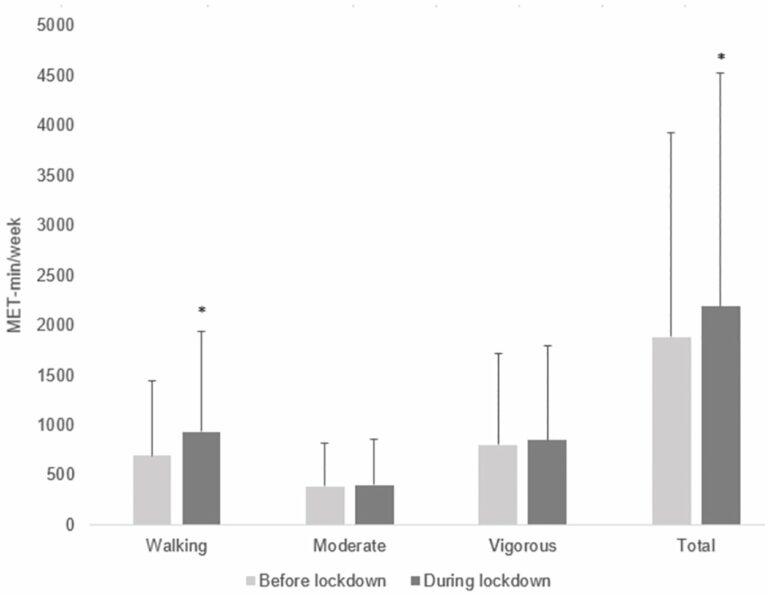Thanks to the Commonwealth Games and Women’s Euros, our stadiums and screens have been full of inspiring sporting stories this summer. Yet statistics consistently show that we are still not getting enough physical exercise, with just 1 in 20 adults in England getting the recommended amount of both aerobic and muscle-strengthening exercise.
Researchers at the University of Hertfordshire and Brunel University have now explored the impact that the COVID-19 lockdown had on exercise habits in England. Challenging earlier studies that reported an overwhelming decline in physical activity, the new research published in PLOS One reveals a more complex picture of exercise habits—with levels of physical activity and amounts of sitting both increasing during the first lockdown, to varying degrees amongst different groups.
Unsurprisingly, pre-lockdown habits were a contributing factor. Those who were already inclined to do less physical activity and more sitting were more likely to continue this behavior during lockdown, and to an even greater extent. Yet factors including age, ethnicity and level of education were all found to influence someone’s levels of exercise.
In data collected in April–May 2020, 41% of people reported that they were spending a high proportion of their weekdays sitting down, compared to just 29% before social restrictions were implemented. Yet there was also a 4% increase (from 32% to 36%) in the number of people who said they were engaging in high amounts of physical activity, most significantly through walking.
The data reveals that those with a lower education level, who had not attended university, were less likely to take part in physical activity. Researchers pointed to a possible link with location and environment, being more likely to live in surroundings that lack green spaces or have more traffic, therefore providing fewer opportunities for outdoor exercise such as walking and running.
Young people (aged 18–39) demonstrated more sedentary behavior, sitting for longer periods. Researchers believe this could be due to the way they chose to entertain themselves in lockdown (for example socializing online, binge-watching streaming services, or video gaming) as well as changes in their employment and education—being more likely to face job losses or be studying online from home.
The research team also identified ethnicity as an influencing factor on activity levels, with participants of non-White ethnicities being more likely to get more exercise, while White participants were more likely to experience low levels of physical activity.
The study reveals more nuances in the behavioral changes caused by lockdowns, and researchers believe that it could help guide future health advice and interventions. Dr. Lindsy Kass, Principal Lecturer in Sport, Health and Exercise and member of the research team, commented on the importance of investigating these differences:
“Our findings suggest that the belief that lockdowns made everyone less active is an overly simplistic viewpoint. Sitting time did increase, but so did physical activity—and it is worth exploring why that happened, and why this varied between different groups of people.
“Lockdown prevented much of our usual day-to-day activity, but while gyms and other facilities were closed, a change in daily life patterns may actually have given some people more time to spend exercising. There was also significant encouragement from the government and media to exercise regularly, for example through the advice given in daily press conferences, and well-publicized online classes—what we could call ‘the Joe Wicks effect.’
“Yet it’s clear that these factors didn’t increase exercise levels for everyone. I hope our research will help researchers, health practitioners and government to better understand the motivations and barriers for different groups, and to tailor advice and interventions accordingly in future.”
“Physical activity and sitting time changes in response to the COVID-19 lockdown in England” is available now to read in PLOS One.
More information:
Daniel P. Bailey et al, Physical activity and sitting time changes in response to the COVID-19 lockdown in England, PLOS ONE (2022). DOI: 10.1371/journal.pone.0271482
Gavin R. H. Sandercock et al, Who is meeting the strengthening physical activity guidelines by definition: A cross-sectional study of 253 423 English adults?, PLOS ONE (2022). DOI: 10.1371/journal.pone.0267277
Provided by
University of Hertfordshire
Citation:
Physical activity and sedentary behavior both increased during COVID lockdown, new research reveals (2022, August 29)

